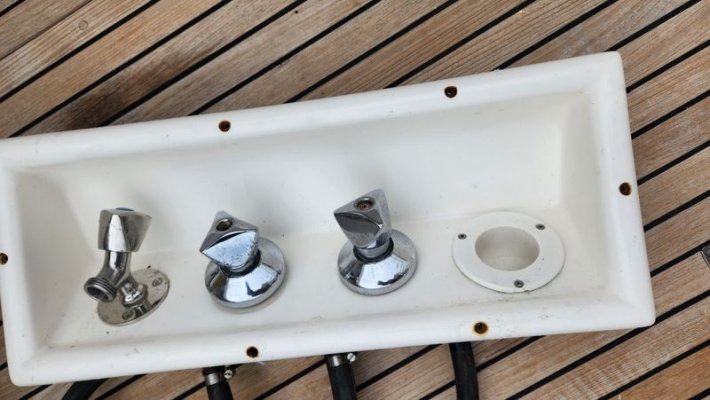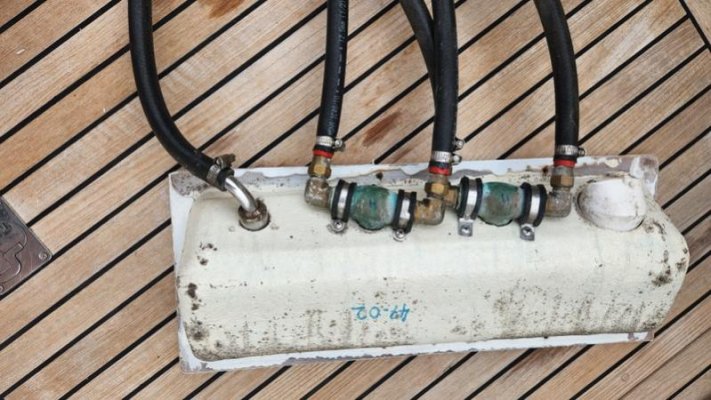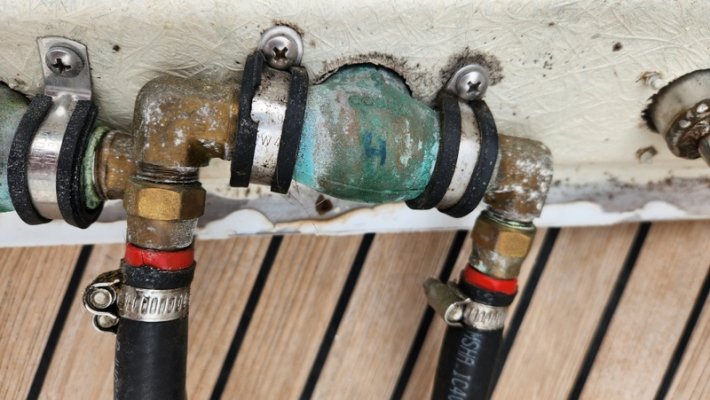wkearney99
Guru
- Joined
- Feb 17, 2018
- Messages
- 2,164
- Location
- USA
- Vessel Name
- Solstice
- Vessel Make
- Grand Banks 47 Eastbay FB
Anyone know what brand faucets GB used for the transom shower on an EB47?
The ones in my EB42#7 have seized up. And since they've got TRIANGULAR shaped handles there's no decent way to get a grip on them.
The back side of the faucet body has one "COBRA" on the housing. No part/model# I could find.
One handle retaining screw is thoroughly corroded in-place and will likely have to be drilled out. The other screw came loose but the handle is seized onto the post (I'd imagine a puller should be able to extract it). I've got them doused with penetrating oil for now.
Getting the housing off the transom was a CHORE. It feels like 5200 was used to bed it into place. I had to use a very thin putty knife to slice through the bond around the whole unit. It was only once I had all of it cut through that I could remove the box.
Anyone know who made these, and if they're still available? Though I don't suppose it really 'matters' as I could just as easily replace them with another set of faucets. I'm open to alternatives but given the odd way the existing faucets are installed I don't know what else to consider.
If I do manage to get these bastards apart I'll certainly consider rebuilding them, but would gladly replace them with something else if there's hope of less hassle down the line.
The ones in my EB42#7 have seized up. And since they've got TRIANGULAR shaped handles there's no decent way to get a grip on them.
The back side of the faucet body has one "COBRA" on the housing. No part/model# I could find.
One handle retaining screw is thoroughly corroded in-place and will likely have to be drilled out. The other screw came loose but the handle is seized onto the post (I'd imagine a puller should be able to extract it). I've got them doused with penetrating oil for now.
Getting the housing off the transom was a CHORE. It feels like 5200 was used to bed it into place. I had to use a very thin putty knife to slice through the bond around the whole unit. It was only once I had all of it cut through that I could remove the box.
Anyone know who made these, and if they're still available? Though I don't suppose it really 'matters' as I could just as easily replace them with another set of faucets. I'm open to alternatives but given the odd way the existing faucets are installed I don't know what else to consider.
If I do manage to get these bastards apart I'll certainly consider rebuilding them, but would gladly replace them with something else if there's hope of less hassle down the line.



